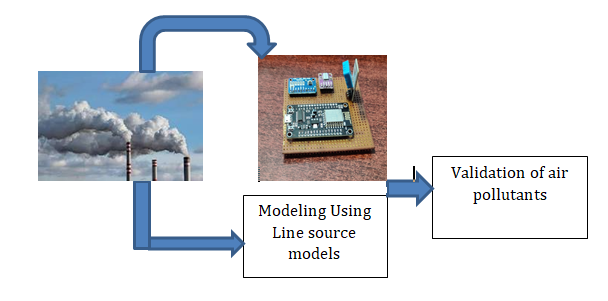
This study presents an innovative approach to air quality assessment by integrating low-cost sensor networks with line source modeling. The research focuses on monitoring air pollutants in urban environments, particularly along a busy highway corridor in Chennai, India. A portable sensor kit was fabricated using metal oxide semiconductor sensors (MICS) to measure NO2 and CO concentrations, along with temperature, humidity and wind speed. Ten monitoring stations were strategically selected based on traffic congestion levels. A portable sensor kit with MICS sensor to measure CO and NO2, a Wi-Fi module (NODEMCU), an analog to digital converter (ADC16 BIT) and DHT-11 sensor to measure temperature (℃) and humidity (%). Also meterological parameters like wind speed and wind direction was also recorded. To validate the sensor data, the Delhi Finite Line Source Model (DFLSM) was employed. The study revealed maximum CO concentration ranging from 1.8 to 5 mg/m3 and NO was from 8 to 32 µg/m3. There has been occasional spike in CO concentration in monitoring stations 5, 6 and 10 beyond the threshold limit of 4 mg/m3. The correlation between observed and modelled data showed R2 values from 0.82 for CO and 0.95 for NO2 indicating good agreement. This integrated approach offers several advantages over traditional monitoring methods, including cost-effectiveness, real-time data collection, and the ability to cover larger areas. This study demonstrates the potential of this method for comprehensive air quality monitoring in urban settings, which can aid in identifying pollution hotspots and informing urban planning and policy decisions.
Total file downloads: 26